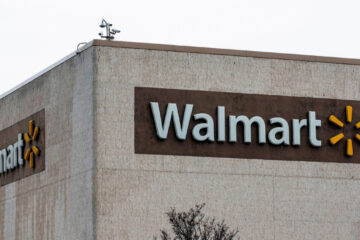There’s been considerable debate about whether the U.S. economy will slip into a recession this year.
The country was already experiencing slower GDP growth and less-than-stellar jobs data, but concerns really accelerated following President Donald Trump’s tariff announcements.
In February, Trump imposed 25% tariffs on Mexico and Canada, plus a 10% ‘fentanyl’ import tax on China, which was increased to 20% in March. Then, in April, he announced higher-than-hoped reciprocal tariffs, a baseline 10% tariff, and 25% tariffs on autos.
Related: Goldman Sachs announces major change to S&P 500 forecast
Most of the reciprocal tariffs were paused on April 9 after stocks tumbled, but a tit-for-tat tariff war with China broke out, lifting U.S. tariffs on Chinese imports to an eye-popping 145%.
Fortunately, the latest trade news is that China and the U.S. have called a trade war ceasefire to hammer out details for a larger trade agreement, which has eased minds.
However, the U.S. economy isn’t yet out of the woods.
The remaining tariffs, including a 30% tariff on China, are still stiff and will increase costs, slowing economic activity later this year.
The situation has caught the attention of Torsten Slok, the closely followed chief economist at Apollo Global Management, a money manager with $513 billion in assets under management.
Tariffs have increased recession risk, but help may be coming from trade deals.
Justin Sullivan/Getty Images
The Fed remains unlikely to cut interest rates despite trade deals
At its height the tariff dustup resulted in U.S. tariffs on China imports of 145% and China tariffs on U.S. imports of 125%. Following a successful meeting in China between U.S. officials, including Treasury Secretary Scott Bessent and China’s Vice Premier He Lifeng, those rates have dropped to 30% and 10%, respectively.
Those levels are much more manageable for companies that previously sounded the alarm about supply-chain disruptions, empty shelves and higher prices.
Related: Bombshell China tariff announcement sends stocks soaring
However, no company is likely happy about the remaining tariffs, given that paying import taxes will cause them to either raise prices (inflation) or take a hit to their bottom lines.
Nevertheless, the new tariff rates, which go into effect on May 14 and last 90 days, have many breathing a sigh of relief that inflation may not derail the U.S. economy as much as previously thought.
The Consumer Price Index retreated to 2.3% in April, the lowest inflation rate since 2021. Still, the inflation data aren’t likely to translate into Federal Reserve interest rate cuts.
The Fed reversed course late last year from hawkish interest rate hikes to rate cuts to shore up the job market. However, the Fed paused additional rate cuts this year amid growing inflation uncertainty, partly because of tariffs.
Since tariffs are inflationary, the Fed is reticent to risk juicing the economy until it understands how tariffs will impact prices. After all, it doesn’t want to throw more fuel on an inflationary fire.
Absent a forced hand, the Fed is likely even more entrenched in its “wait-and-see” mode.
Major analyst resets recession risk outlook
The economy isn’t as strong as a year ago, but it’s not a given that it will tilt into a recession or even that stagflation will happen. Much will depend on how the trade negotiations shake out, and of course, on consumer and business confidence.
In any event, Apollo’s Slok says a reset of China tariffs is enough of a catalyst to change his recession outlook. Slok thinks the odds that America will collapse into recession have fallen to 30%.
More Experts
Treasury Secretary delivers optimistic message on trade war progressShark Tank’s O’Leary sends strong message on economyBuffett’s Berkshire has crucial advice for first-time homebuyers
“The tail risk coming from a complete collapse in trade between China and the US has been removed,” wrote Slok in a research note.
To be sure, Slok’s 30% recession forecast is still concerning. It may take time for people to adjust to any tariffs and their impact, even if the tariffs are smaller than some feared.
“Looking ahead, the key issue for markets is to monitor the speed with which confidence is restored among consumers, corporates and foreigners,” wrote Slok. “Is trust and confidence going to rebound quickly, or is it going to take several quarters or several years?”
Slok is also closely monitoring tourism, which has slumped this year due to Trump’s election and the global trade battle.
“One particular area to watch is tourism,” he said. “Tourism into the US makes up 10% of the country’s GDP, and the observed 30% to 40% decline in visitor arrivals from Canada and Europe is having a negative impact on US airlines, hotels, and restaurants.”
If confidence improves and tourism rebounds, perhaps Slok’s outlook will improve even further.
Related: Veteran fund manager unveils eye-popping S&P 500 forecast


